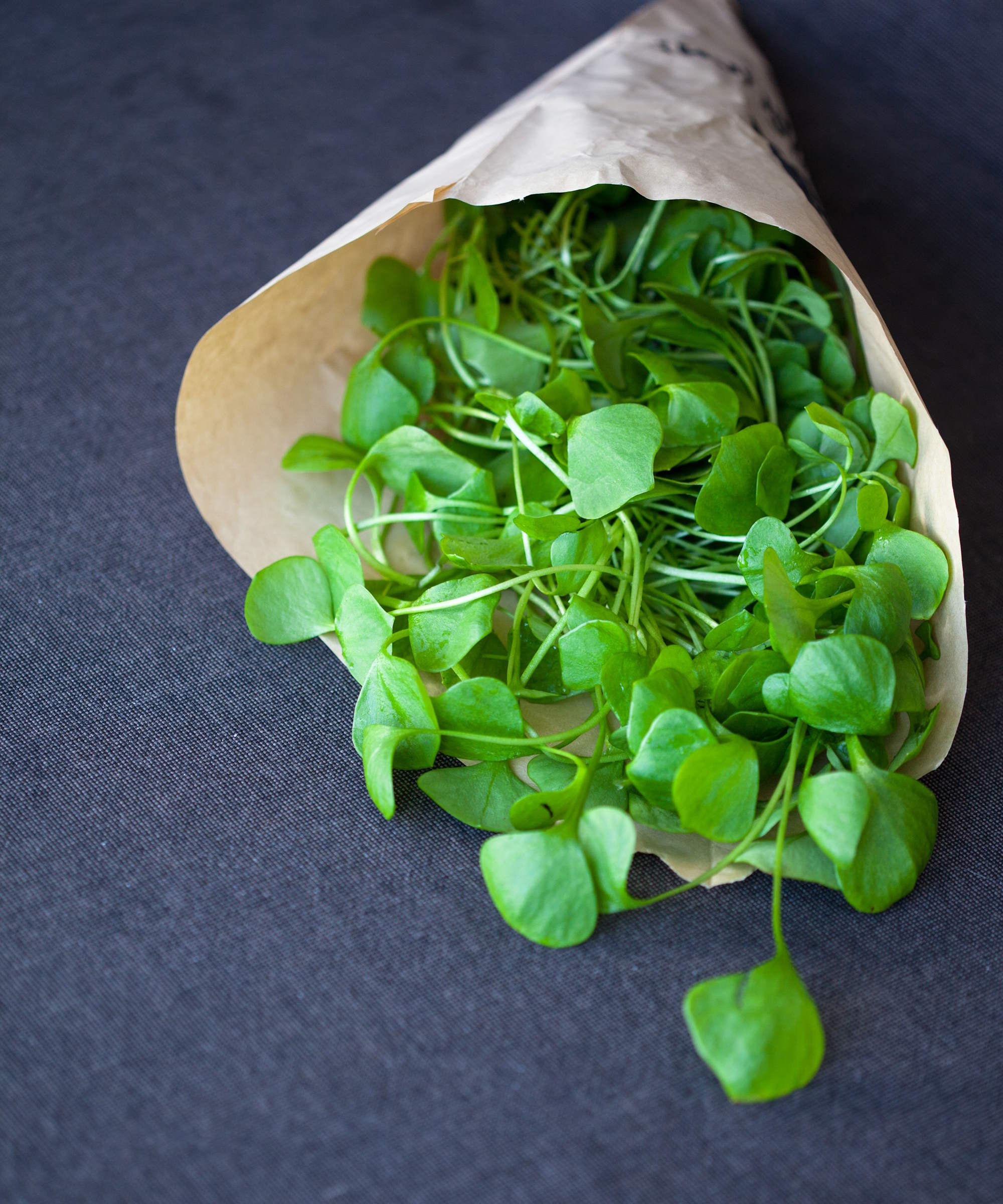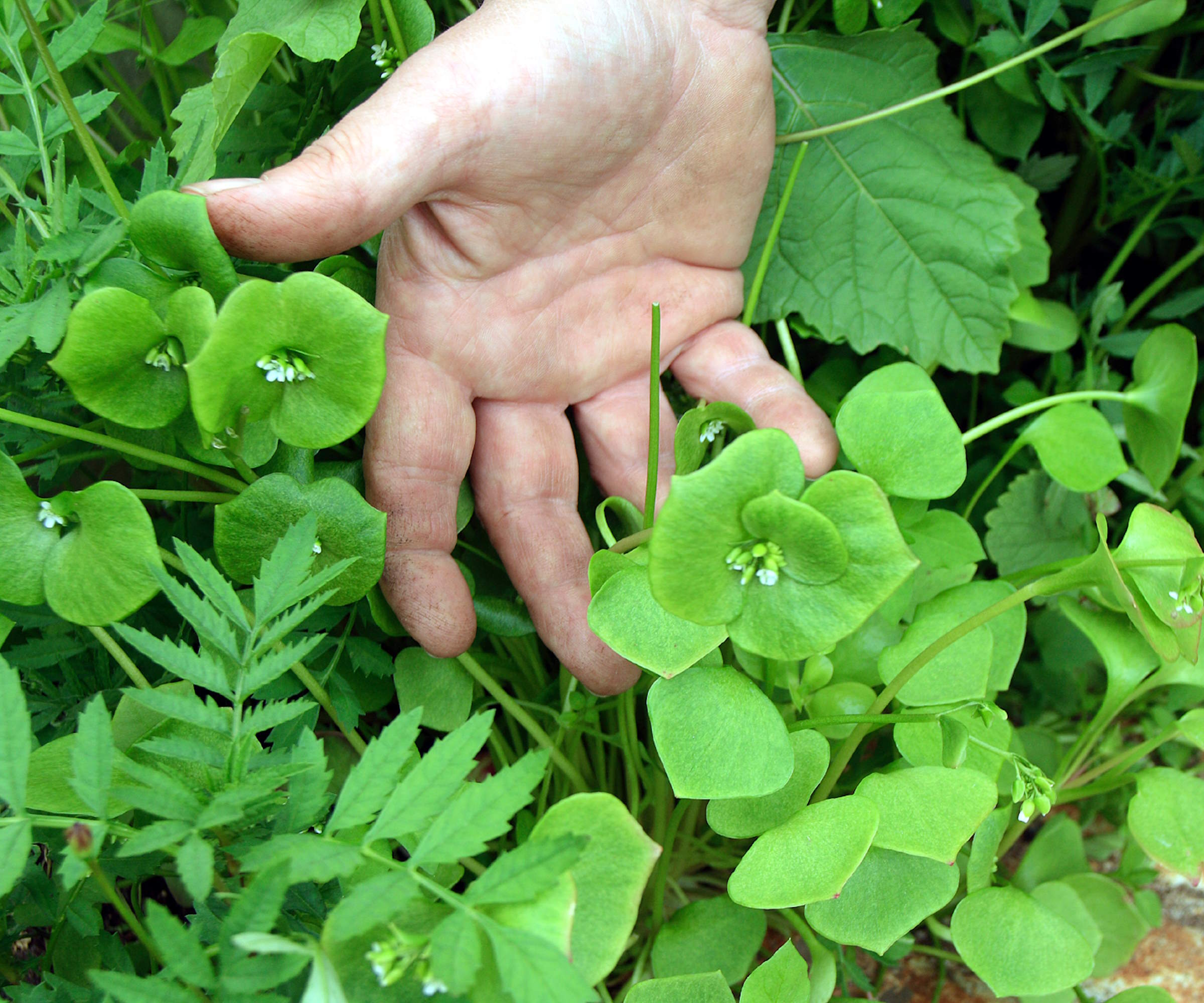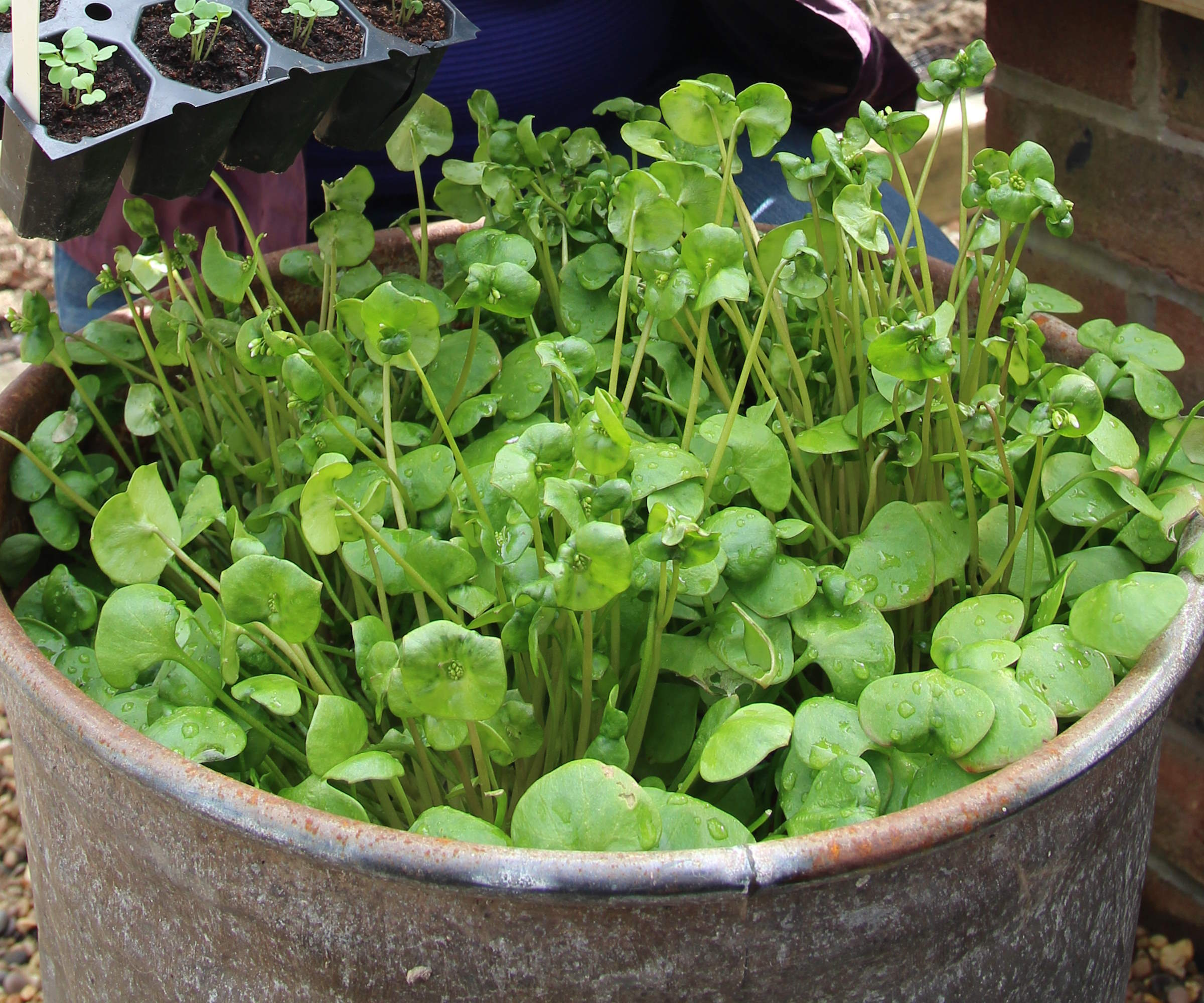How to grow winter purslane – an underappreciated plant perfect for winter salads
You can enjoy long harvests of leaves, even through the cold and usually-lean winter months


Winter purslane is a really useful and under-valued plant that can provide you with a bounty of mild salad leaves throughout the year. While it can actually be harvested for many months, it really comes into its own throughout the winter when it is a real bonus to get fresh homegrown harvests.
Also known by names such as claytonia or miner’s lettuce, winter purslane are small plants that grow leaves and stems no more than eight inches tall. It grows very quickly and the leaves and stems are all edible.
If you are looking for new ideas for your vegetable garden to provide crops through winter, then winter purslane is well worth considering. I grew and harvested the plants for chefs as a winter leaf and found it very easy to grow and crop. The main downside of winter purslane is that it can self-seed in abundance, unless you make sure to remove old flower heads.

Winter purslane plants can be cut and cropped multiple times
Why grow winter purslane?
Winter purslane is very versatile and highly useful. The leaves and stems can be eaten raw or cooked, in a similar way as you would spinach, and plants can also be grown indoors or outdoors - potentially available to crop year-round. We take a closer look at how to grow, care for, and harvest winter purslane plants.
Where to grow winter purslane

Winter purslane leaves have the most flavor before the plant flowers
Winter purslane is a good vegetable to grow in shade as it is very tolerant of shady spots in a vegetable garden. The crop can tolerate most soil types, but it will benefit from a soil boosted by the addition of organic matter such as compost or well-rotted manure. Try to ensure your chosen growing spot has good drainage.
Kiersten Rankel, garden expert and botanist for the plant app Greg, recommends that, wherever you choose to grow winter purslane, it is ideal to utilize covers to help boost the plant during the cooler months of spring and fall.
She says: ‘Consider adding cloches, cold frames, or small tunnel rows over plants to boost cold protection and accelerate growth. Just ventilate on sunny winter afternoons to prevent interior moisture buildup during dormant periods.’
Design expertise in your inbox – from inspiring decorating ideas and beautiful celebrity homes to practical gardening advice and shopping round-ups.
Winter purslane is a crop that is ideal for growing in raised garden beds or in pots as part of a vegetable container garden - making the crop suitable for small vegetable garden ideas. Its shallow root system helps make the plant ideal for many locations, including kitchen gardens, flower beds, raised planters, pots, or even indoors on a bright windowsill.
Just beware that winter purslane does have a reputation for self-seeding and it can return year-after-year if left to its own devices. However, if you want an edible ground cover for a space, then winter purslane may fit the bill.

Kiersten Rankel is a certified Louisiana Master Naturalist and regularly volunteers with local community gardens and non-profits to help restore critical ecosystems along the Gulf Coast. She earned her master's degree from Tulane University in Ecology and Evolutionary Biology after her undergraduate degree in Environmental Biology, also from Tulane. In her spare time, she enjoys hiking and tending to her 150+ houseplants and vegetable garden.
How to grow winter purslane from seeds

Winter purslane's shallow roots make it ideal for growing in pots
Winter purslane can be sown at several times of the year to allow for the longest harvest period possible, ranging from early spring for summer harvests to early fall sowings undercover to provide a crop through winter and spring.
Early sowings of winter purslane can be made in a greenhouse in early spring, or sown in situ once the soil temperatures warm up. Sowing seeds into pots or trays and then transplanting the seedlings into the garden later can be ideal for colder US hardiness zones - as you can get a head start on growing while waiting for the soil temperature to increase.
Direct sowings can either be made into shallow rows, or broadcast into patches to grow. Kate Russell, author of Stop Wasting Your Yard, recommends that ‘seeds should be planted 1/4-inch deep and spaced 4 inches apart’. She adds to ‘keep the soil moist until germination occurs’.
It is a good idea to sow winter purslane in succession. A second sowing of seeds can take place in late summer or early fall in order to provide a harvest of leaves throughout the colder months ahead. Kiersten Rankel says that where and when you make later sowings may depend on your climate and set-up.
‘Sow winter purslane seeds from late summer through mid fall while adequate daytime soil warmth remains,’ says Kiersten. ‘In significantly cooler zones, sow in early fall under protective cloches or tunnels to enable winter growth.’
Winter purslane plants ultimately want to be spaced around eight inches apart in rows at least 10 inches apart. It is a crop that can be planted anywhere and does not need to be moved each year as part of a crop rotation plan.

Kate Russell helps others make the most of a landscape by incorporating delicious, attractive edible plants. She is the author of Stop Wasting Your Yard!, available at Amazon, and helped design and install an educational garden at Martial Cottle Park in San Jose, CA.
How to care for winter purslane

A sowing of winter purslane can provide a large harvest of leaves
Winter purslane should be regularly watered, as the plant has shallow roots and can easily dry out in warm weather. Keep a close eye on the moisture levels and make sure to water the soil and not the foliage - as soaking the leaves can leave the plant increasingly susceptible to fungal issues.
Mulching around the plants with a layer of organic matter, such as compost, well-rotted manure, or leaf mold, can help to keep more moisture in the soil for the plants to access.
Winter purslane tends to grow fast and any addition of organic matter before planting should suffice for the plant to have enough nutrients to grow fast and healthily. Kiersten Rankel claims that top dressing foliage as it is developing with extra compost or an organic nitrogen fertilizer can be one way to ‘fuel fast growth’ if desired.
Young winter purslane plants may be highly susceptible to slug damage, so consider slug control methods, such as beer traps, nematodes, or covers, to stop your plants getting nibbled.
Winter purslane is a fast growing vegetable and the first harvests can take place as little as six weeks after sowing. The leaves are at their most flavorful before the plant flowers. Simply use clean and sharp tools, such as a harvesting knife or pruning shears, to cut away leaves from the plant. By cutting around an inch from the base of the plant, it will allow it to regrow so you can have multiple harvests. One example of a good tool to use to cut winter purslane is this harvest knife, available at Amazon.
Winter purslane planted in late summer or fall should keep providing you with harvests all the way through winter, until the plants start to flower come spring. Removing plants before they go to seed can help avoid the issue of winter purslane prolifically self-seeding around the garden.
FAQs
What is the difference between purslane and winter purslane?
As well as winter purslane, you can also grow common purslane, also known as summer purslane. Common purslane plants love hot and warm weather, but not the cold and the wet. They produce oval, succulent-like leaves that can be added, together with the stems, to summer salads.
Is winter purslane perennial?
Winter purslane is a hardy annual plant, but it does notoriously self-seed. It means you may struggle to get rid of the plants, unless you diligently keep on top of them. To help prevent winter purslane taking a hold in your backyard, regularly cut off the flower heads before they develop into seeds.
Another crop that can be invaluable in winter salads is corn salad. Also known as lamb’s lettuce or mache, growing corn salad is really simple and can provide you with lots of nutty-tasting leaves throughout the winter months. You can see an example of corn salad seeds available at True Leaf Market.

Drew has worked as a writer since 2008 and was also a professional gardener for many years. As a trained horticulturist, he worked in prestigious historic gardens, including Hanbury Hall and the world-famous Hidcote Manor Garden. He also spent time as a specialist kitchen gardener at Soho Farmhouse and Netherby Hall, where he grew vegetables, fruit, herbs, and cut flowers for restaurants. Drew has written for numerous print and online publications and is an allotment holder and garden blogger. He is shortlisted for the Digital Gardening Writer of the Year at the 2025 Garden Media Guild Awards.
